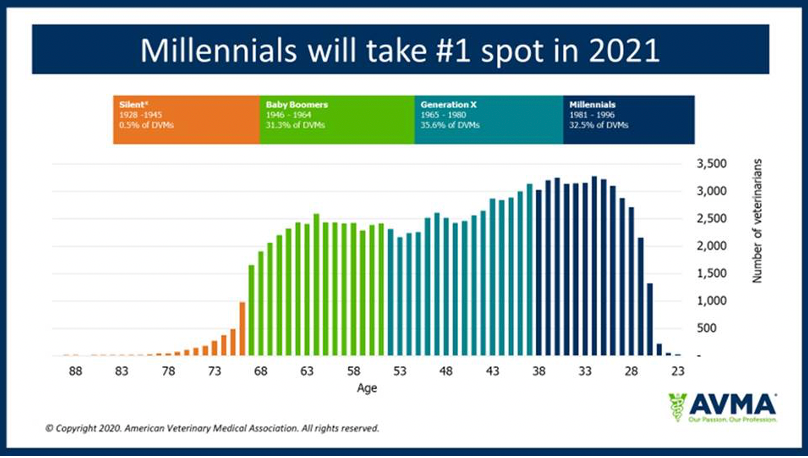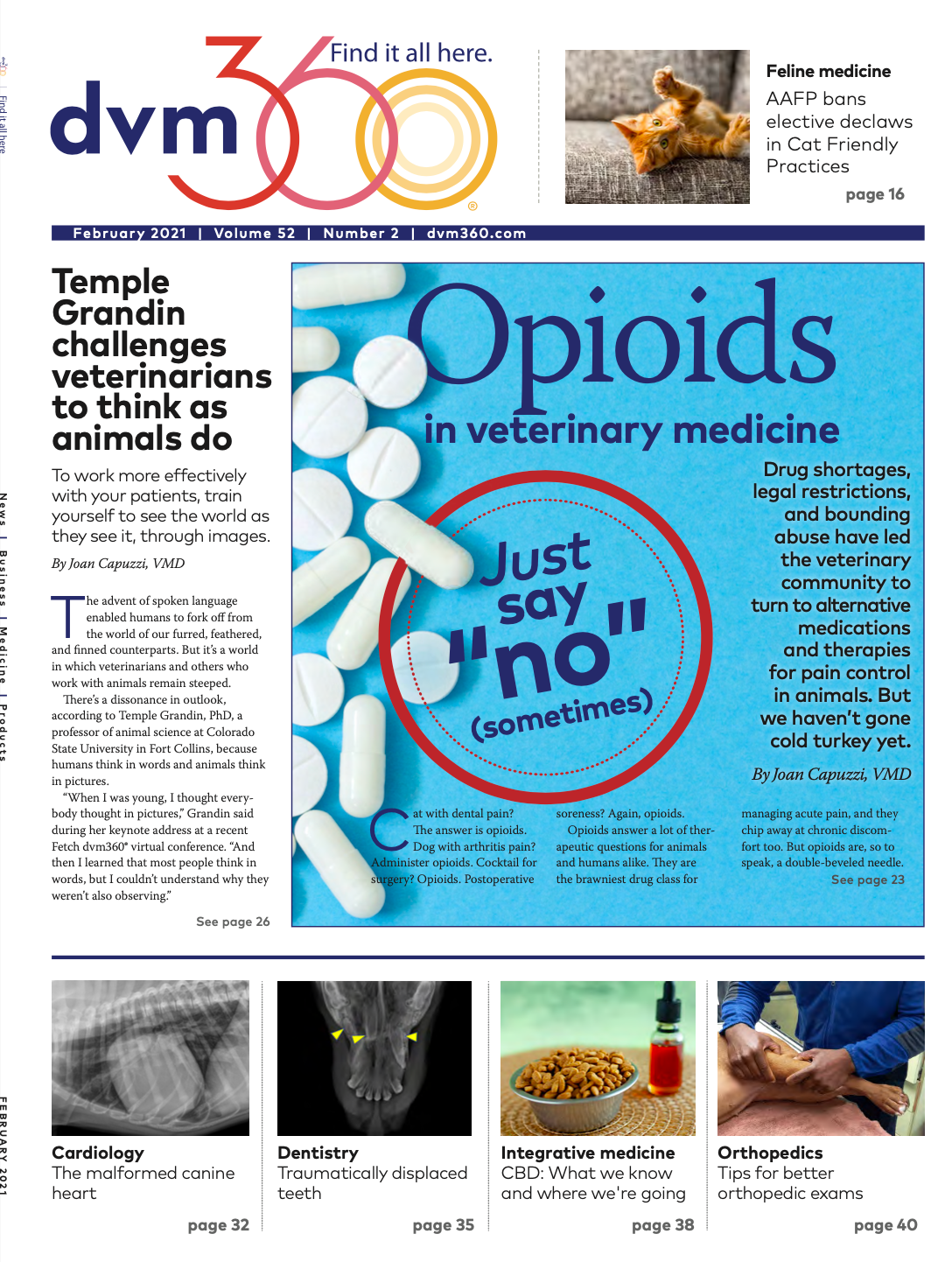Generational shift brings opportunities for veterinary practices
As the veterinary workforce shifts from Gen X to millennials, increased communication and collaboration will be key to practice success.
Friends Stock / stock.adobe.com

In 2021, millennials will surpass Generation X as the leading age group in the US veterinary workforce. This natural generational shift will bring significant change to the profession, affecting predominant work habits, values, and commitments, among other areas. Our community can leverage these changes to our advantage—spurring innovation and setting the stage for a strong veterinary future—if we work together with mutual collaboration, respect, and understanding.
Are we up to the challenge?
The veterinary workforce includes 4 generations: silents (born 1928-1945), baby boomers (1946-1964), Generation X (1965-1980), and millennials (1981-1996). Each generation has its own cultural tendencies and characteristics shaped by shared life experiences. That means that as millennials surpass the other age groups and baby boomers continue to reach retirement age, we’ll see a shift in the collective behaviors and attitudes of veterinarians and changes in the veterinary profession overall.
Figure 1

The key is how to approach these changes. Should generational differences be viewed as learning opportunities or annoyances? It’s common to bemoan other generations for what some see as shortcomings based on stereotyping (eg, millennials lack motivation, baby boomers are slow to adopt technology). But the truth is, if we take the time to really listen, explore, and understand one another, there’s much we can learn from our peers, no matter their age.
Following are a few areas that likely will be affected by this generational shift and how we might use the changes to our benefit.
Work-life integration
As a group, millennials strive to maintain a healthy work-life balance. Well-being is a top priority, and they know it requires a conscious effort in many areas of their lives. Whereas baby boomers may pride themselves on working 80 hours per week, that’s not what their millennial peers aim to do, as a rule. This doesn’t mean that millennials value their careers less or that they are less committed to the job. It’s simply a different balance of priorities.
As we look to grow our teams or replace retiring members with new employees, it’s important to consider work-life integration in the hiring process. Millennial job seekers are looking for an environment in which they’re seen as a whole person—not just as an employee, but someone with hobbies, interests, and goals outside the workplace.
Here are other characteristics millennials typically look for in a job:
- Supportive work culture
- Respect and influence in day-to-day decision-making
- Opportunities for growth
- Community impact
The American Veterinary Medical Association (AVMA) has resources for creating a supportive work environment and culture that support work-life integration. Find them at avma.org/WorkplaceWellbeing.
Mentorship
Another characteristic of millennials is their desire for mentorship. Especially as they enter the profession, this younger cohort will look toward their more experienced peers for feedback, guidance, and encouragement. Gen Xers and baby boomers can fill this very critical mentorship role.
Many important skills aren’t taught in veterinary school but rather come with years of experience and practice. Baby boomers and Gen Xers have the expertise and insight that younger veterinarians are looking for as they build their competence and confidence in practice. It’s not just a matter of fine-tuning clinical skills, which we all know are critical. Just as important is mastering the many nuances of client communication, bedside manner, team building, and running a business. If you’re a practice owner, this is especially crucial when considering who will take ownership of (or manage) the practice after you retire.
AVMA’s tools to strengthen the veterinary team are a great place to begin fostering these critical team relationships and supporting mentorship. They include downloadable resources for everything from onboarding and training to performance reviews and running effective team meetings.
Technology
Although there is much to be learned from baby boomers and Generation X, the same is true of millennials, the first digitally native generation. As a group, millennials have an innovative mindset, and other groups can benefit from that.
Here’s an example: Millennials may become frustrated if they’re expected to follow standard procedures when they know of a better, faster, or more efficient way. More often than not, this will involve an app or technology service their bosses or colleagues aren’t aware of. Listen to their ideas. Explore their suggestions. Millennials grew up learning the language of technology, and they’re likely better versed in the many possibilities for implementing it in practice.
Another example: Millennials may expect or ask for flexible working hours or the opportunity to work remotely. Hear them out. Are there certain things that can be done outside the clinic? If so, is there any reason why they shouldn’t be? There are many ways to adopt technology to make work easier, faster, and more convenient. This can improve work-life balance for all and potentially add to practice efficiency.
The client connection
The veterinary profession isn’t alone in experiencing this generational shift. It’s a microcosm of the population as whole. Is it any wonder that practices are implementing more and more telehealth services? This meets the changing needs of clients, who include the same growing millennial population.
Just as the generational shift is affecting many of the ways in which teams work together, so does it alter relationships with clients. It will serve the profession well to consider that millennial colleagues hold critical insight into the changing needs and expectations of clients.
Bottom line
Different upbringings and experiences bring new wisdom to the problems and challenges we all face. As a generational shift in veterinary medicine occurs, intergenerational communication and collaboration will be crucial to success. It’s critical to take the opportunity to learn from colleagues and peers who are both younger and older. Above all, listen. True listening isn’t a passive exercise, but one that is intentional. Only when unique perspectives are met with thoughtful exploration and mutual respect can true understanding and innovation occur.
Matthew Salois, PhD, is director of the AVMA Economics Division.
